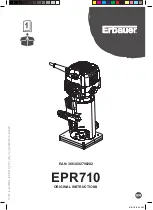
AppendixE
Regulatory Information
41
Dual-Band Wreless-N Ggabt Router wth Storage Lnk
Appendx E:
Regulatory Informaton
FCC Statement
This device complies with Part 15 of the FCC Rules.
Operation is subject to the following two conditions: (1)
This device may not cause harmful interference, and (2) this
device must accept any interference received, including
interference that may cause undesired operation.
This product has been tested and complies with the
specifications for a Class B digital device, pursuant to Part
15 of the FCC Rules. These limits are designed to provide
reasonable protection against harmful interference in
a residential installation. This equipment generates,
uses, and can radiate radio frequency energy and, if not
installed and used according to the instructions, may
cause harmful interference to radio communications.
However, there is no guarantee that interference will not
occur in a particular installation. If this equipment does
cause harmful interference to radio or television reception,
which is found by turning the equipment off and on, the
user is encouraged to try to correct the interference by
one or more of the following measures:
Reorient or relocate the receiving antenna
Increase the separation between the equipment or
devices
Connect the equipment to an outlet other than the
receiver’s
Consult a dealer or an experienced radio/TV technician
for assistance
FCC Caution: Any changes or modifications not expressly
approved by the party responsible for compliance could
void the user’s authority to operate this equipment.
FCC Radiation Exposure Statement
This equipment complies with FCC radiation exposure
limits set forth for an uncontrolled environment. This
equipment should be installed and operated with
minimum distance 20cm between the radiator and your
body.
This transmitter must not be co-located or operating in
conjunction with any other antenna or transmitter. IEEE
802.11b or 802.11g operation of this product in the USA is
firmware-limited to channels 1 through 11.
The device for the band 5150-5250 MHz is only for indoor
usage to reduce the potential for harmful interference
to co-channel mobile satellite systems; the maximum
antenna gain of 3.7 dBi permitted (for devices in the
bands 5250-5350 MHz and 5470-5725 MHz) to comply
•
•
•
•
with the e.i.r.p. limit; and the maximum antenna gain
of 3.7 dBi permitted (for devices in the band 5725-5825
MHz) to comply with the e.i.r.p. limits specified for point-
to-point and non point-to-point operation as appropriate,
as stated in section A9.2(3).
High-power radars are allocated as primary users (meaning
they have priority) of the bands 5250-5350 MHz and 5650-
5850 MHz and these radars could cause interference and/
or damage to LE-LAN devices.
Safety Notices
Caution: To reduce the risk of fire, use only No.26 AWG
or larger telecommunication line cord.
Do not use this product near water, for example, in a
wet basement or near a swimming pool.
Avoid using this product during an electrical storm.
There may be a remote risk of electric shock from
lightning.
WARNING:
This product contains lead, known
to the State of California to cause cancer, and
birth defects or other reproductive harm. Wash
hands after handling.
Wireless Disclaimer
The maximum performance for wireless is derived from
IEEE Standard 802.11 specifications. Actual performance
can vary, including lower wireless network capacity,
data throughput rate, range and coverage. Performance
depends on many factors, conditions and variables,
including distance from the access point, volume of
network traffic, building materials and construction,
operating system used, mix of wireless products used,
interference and other adverse conditions.
Avis de non-responsabilité concernant les
appareils sans fil
Les performances maximales pour les réseaux sans fil
sont tirées des spécifications de la norme IEEE 802.11.
Les performances réelles peuvent varier, notamment
en fonction de la capacité du réseau sans fil, du débit
de la transmission de données, de la portée et de la
couverture. Les performances dépendent de facteurs,
conditions et variables multiples, en particulier de la
distance par rapport au point d’accès, du volume du trafic
réseau, des matériaux utilisés dans le bâtiment et du
type de construction, du système d’exploitation et de la
combinaison de produits sans fil utilisés, des interférences
et de toute autre condition défavorable.
•
•
•





































